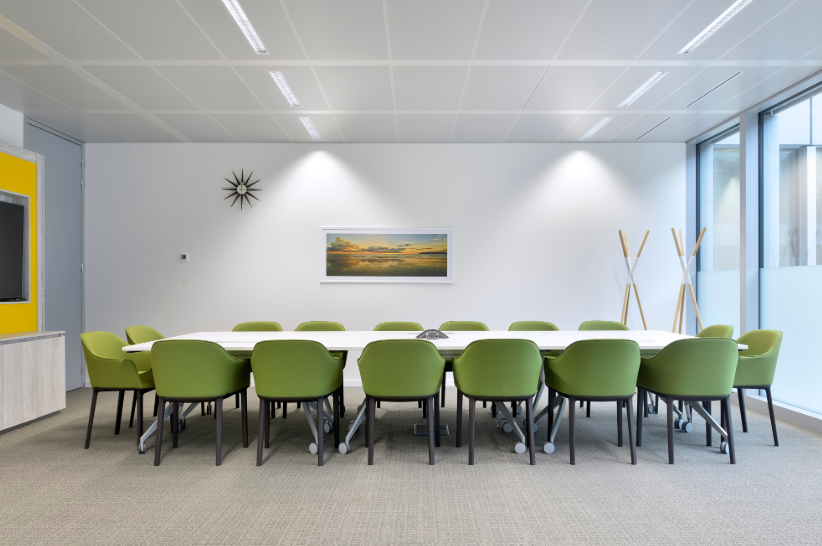
Office Spaces In Central Locations
Introduction To Office Buildings In City Centers
The demand for office building central in prime locations is shaping the future of commercial real estate. As more companies shift towards dynamic working environments, being situated in the heart of urban centers offers a clear strategic advantage. These office buildings serve as more than just places to work—they represent growth, opportunity, and accessibility.
Businesses are increasingly drawn to locations that provide not only convenience for employees but also proximity to clients, partners, and essential services. The trend toward centralized workspaces reflects how companies are rethinking productivity, image, and operational efficiency.
Advantages Of Central Office Locations
office building central properties come with a variety of benefits that make them attractive for businesses of all sizes.
- Accessibility: Central office buildings are typically well-connected through public transport, making commuting easier for employees.
- Business Visibility: Being located in a prime area improves company recognition and creates a prestigious impression.
- Networking Opportunities: Central areas host a range of industries, which fosters collaboration and partnerships.
- Amenities: Proximity to banks, restaurants, courier services, and shopping centers provides added convenience to daily business operations.
These benefits play a significant role in shaping business growth, employee satisfaction, and client relationships.
Modern Facilities And Design Innovations
office building central structures are often designed with the latest technologies and architectural practices. From the exterior façade to interior layouts, these buildings prioritize both function and aesthetics.
Common features include:
- Open and flexible floor plans
- Smart energy systems and climate control
- Fast elevators and advanced fire safety mechanisms
- High-speed internet and IT infrastructure
- Parking spaces, fitness centers, and shared lounges
These features make central office buildings adaptable to modern work styles, including hybrid and coworking models.
See also: Technology, Talent, and Trust: Building Businesses in the Digital Era
Role In Employee Retention And Productivity
The work environment has a direct impact on employee engagement and productivity. Employees working in a well-located office building central central often benefit from shorter commutes, access to dining and retail options, and an overall improved work-life balance.
In addition, the physical workspace—its lighting, ventilation, ergonomics, and layout—can significantly influence motivation and performance. Employers that invest in central office spaces demonstrate a commitment to their team’s well-being, helping with retention and recruitment.
Office Building Central As An Investment Option
Real estate investors view office building central properties as valuable assets with strong return potential. Due to their location and high demand, these buildings typically maintain high occupancy rates and command premium rental prices.
The appreciation of property value in central business districts also makes such investments stable and profitable over time. Investors can benefit from steady cash flow while also gaining from long-term capital gains.
This is why many real estate firms and funds include centrally located office buildings in their portfolios, recognizing their economic and strategic value.
Integration With Public Infrastructure
One of the defining traits of office building central is its integration with urban infrastructure. These buildings are often close to:
- Metro and bus stations
- Airports and highways
- Government offices and business chambers
- Hotels and convention centers
Such connectivity enables smoother business operations, easier travel for clients and stakeholders, and better participation in city-wide economic activities.
This infrastructural advantage positions centrally located offices as hubs of activity and innovation.
Sustainability Considerations In Central Office Buildings
Sustainability is becoming a crucial part of office building central design. Developers and owners are incorporating green features to reduce operational costs and minimize environmental impact.
Sustainable measures include:
- Energy-efficient HVAC and lighting systems
- Solar panels and green roofs
- Rainwater harvesting and greywater recycling
- Eco-certified construction materials
Buildings that meet environmental standards often receive green certifications, increasing their value and appeal to tenants who prioritize corporate responsibility.
Challenges In Central Office Development
Despite the advantages, developing or acquiring office building central properties comes with challenges.
- High initial costs: Land and construction expenses are significantly higher in city centers.
- Zoning and regulations: Central districts often have complex building codes and permitting processes.
- Traffic congestion: Central areas may experience high traffic, requiring strategic planning for parking and logistics.
- Limited space: Expanding or modifying central buildings can be difficult due to space constraints.
Nevertheless, the long-term benefits and market demand typically justify the investment and planning required.
Trends Shaping Central Office Design
The future of office building central is influenced by changing work patterns and global trends. Key shifts include:
- Hybrid workspaces: Offices are being designed to support both remote and on-site working arrangements.
- Well-being focus: More emphasis is placed on biophilic design, natural light, and mental wellness facilities.
- Smart building systems: Technology is used to automate lighting, security, and energy management.
- Community engagement: Ground floors may host cafes, galleries, or event spaces to integrate with the local community.
These trends ensure that central office buildings remain relevant and appealing to future generations of workers and entrepreneurs.
Government Incentives And Support
Recognizing the importance of office building central to economic development, many governments offer incentives to encourage sustainable and commercial projects in central zones. These may include:
- Tax incentives for green buildings
- Infrastructure development programs
- Reduced interest loans for real estate developers
- Fast-track permitting and approvals
Such policies not only support real estate growth but also aim to enhance urban efficiency and competitiveness.
Conclusion
office building central is more than a commercial space—it is a strategic asset that offers connectivity, visibility, and modern functionality. Whether for growing businesses, investors, or city planners, these buildings represent the intersection of innovation, sustainability, and economic vitality.
As urbanization continues and work dynamics evolve, the importance of central office locations will only grow. For businesses aiming to thrive in a fast-paced, interconnected world, investing in or operating from a central office building remains a smart and future-ready choice.



